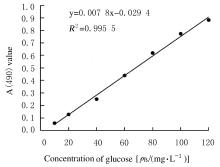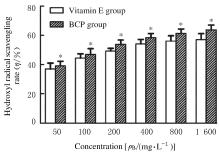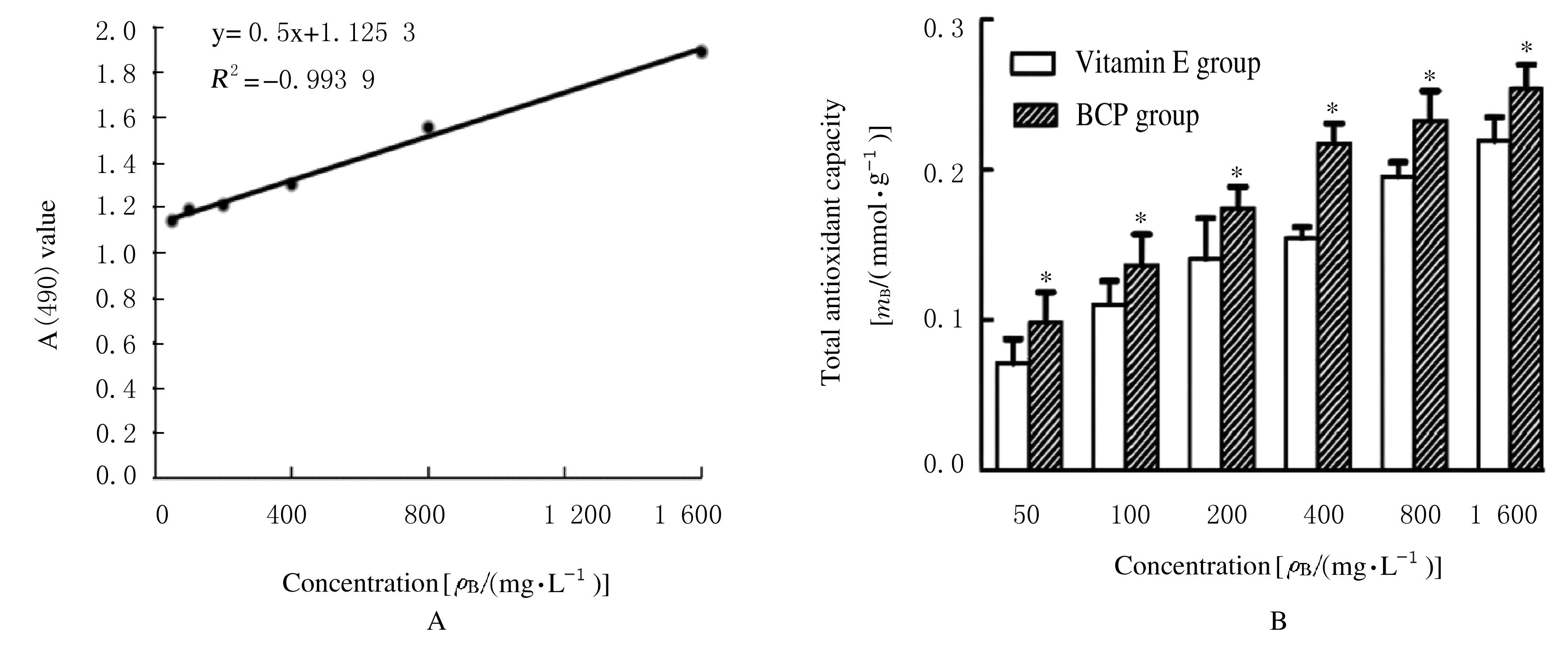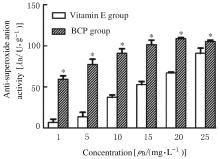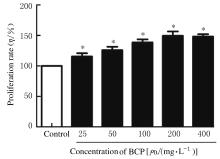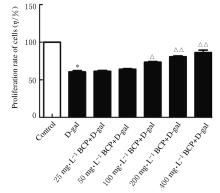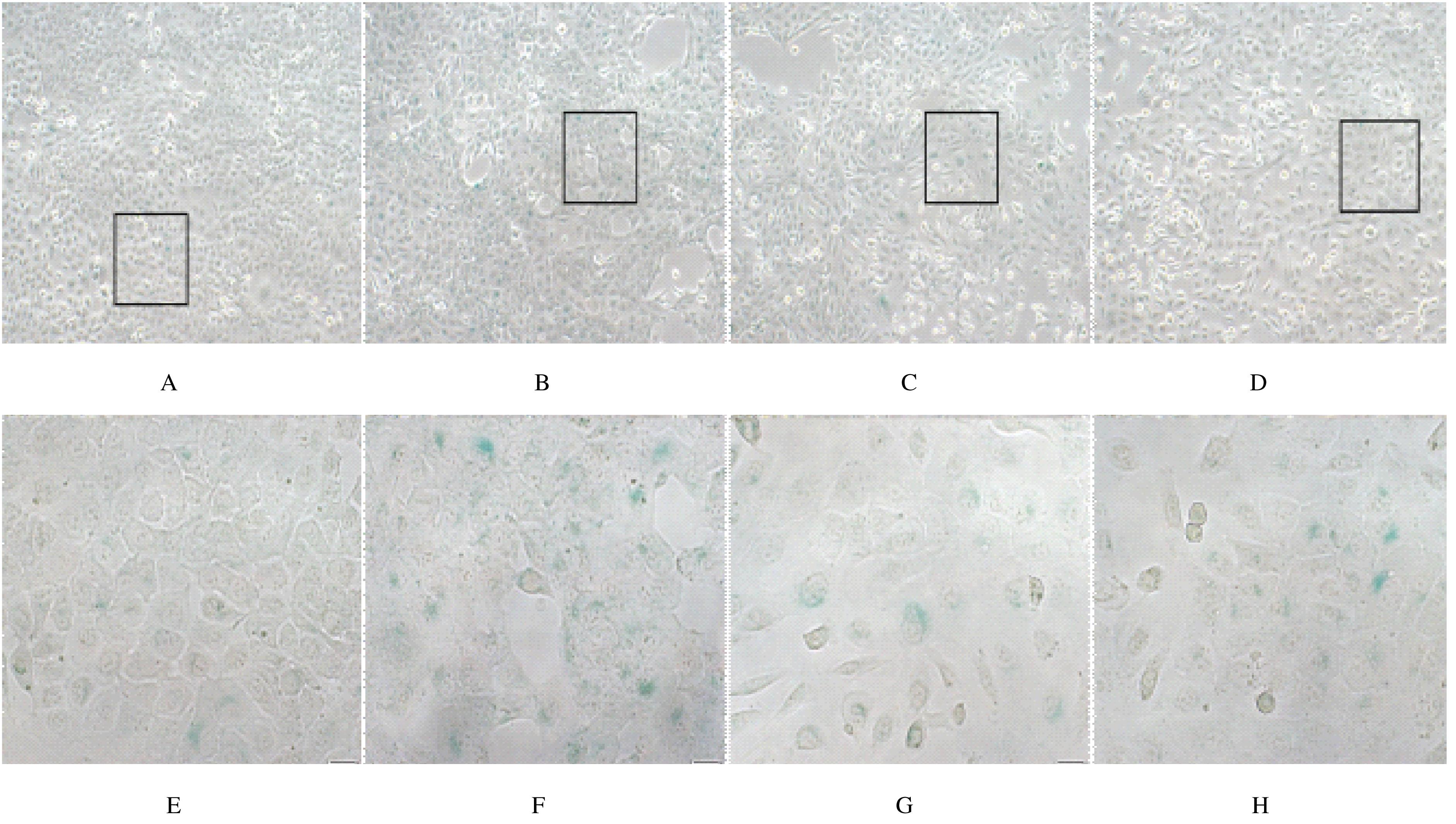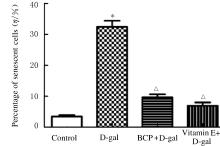Journal of Jilin University(Medicine Edition) ›› 2022, Vol. 48 ›› Issue (1): 65-73.doi: 10.13481/j.1671-587X.20220109
• Research in basic medicine • Previous Articles Next Articles
Protective effect of Bupleurum chinense polysaccharide on oxidative damage of HK-2 cells induced by D-gal
Junyu HOU1,Minghui LI1,Mengran XU2,Junhong GE2,Ye SHEN3( ),Tan LI3,Xin SUN2(
),Tan LI3,Xin SUN2( )
)
- 1.Department of Pathophysiology,School of Basic Medical Science,Beihua University,Jilin 132013,China
2.Staff Office of Biopharmaceutical,School of Pharmacy,Jilin Medical University,Jilin 132013,China
3.Department of Social Medicine and Hygiene,School of Public Health,Beihua University,Jilin 132013,China
-
Received:2021-04-13Online:2022-01-28Published:2022-01-17 -
Contact:Ye SHEN,Xin SUN E-mail:56134761@qq.com;sunxinbh@126.com
CLC Number:
- R285.5
Cite this article
Junyu HOU,Minghui LI,Mengran XU,Junhong GE,Ye SHEN,Tan LI,Xin SUN. Protective effect of Bupleurum chinense polysaccharide on oxidative damage of HK-2 cells induced by D-gal[J].Journal of Jilin University(Medicine Edition), 2022, 48(1): 65-73.
share this article
Tab. 1
Proliferation rates of HK-2 cells in different concentrations of D-gal groups at different time"
| Group | Proliferation rate of HK-2 cells | |||
|---|---|---|---|---|
| (t/h) 6 | 12 | 24 | 48 | |
| Control | 100.00±2.97 | 100.00±2.08 | 100.00±0.02 | 100.00±0.04 |
D-gal(g·L-1) 5 | 93.59±3.94* | 92.39±1.88* | 90.87±2.02* | 85.28±3.54* |
| 10 | 89.97±1.64* | 87.59±1.35* | 82.72±2.27* | 75.90±2.04* |
| 20 | 85.82±2.18* | 85.92±1.68* | 74.41±1.57* | 64.77±1.31* |
| 40 | 81.03±2.79* | 81.01±1.24* | 68.42±1.60* | 58.24±3.44* |
| 80 | 75.13±2.16* | 71.06±0.93* | 58.92±0.78* | 37.08±1.07* |
| 100 | 69.64±3.20* | 64.30±1.27* | 53.36±1.09* | 27.81±0.81* |
| 1 | 邹多为, 魏玉坤. 如何应对加速的老龄化[N]. 新华每日电讯, 2021-05-13(5). |
| 2 | VALENTIJN F A, FALKE L L, NGUYEN T Q, et al. Cellular senescence in the aging and diseased kidney[J]. J Cell Commun Signal, 2018, 12(1): 69-82. |
| 3 | GLASSOCK R J, DENIC A, RULE A D. The conundrums of chronic kidney disease and aging[J]. J Nephrol, 2017, 30(4): 477-483. |
| 4 | BERKENKAMP B, SUSNIK N, BAISANTRY A, et al. In vivo and in vitro analysis of age-associated changes and somatic cellular senescence in renal epithelial cells[J]. PLoS One, 2014, 9(2): e88071. |
| 5 | DAVALLI P, MITIC T, CAPORALI A, et al. ROS, cell senescence, and novel molecular mechanisms in aging and age-related diseases[J]. Oxid Med Cell Longev, 2016, 2016: 3565127. |
| 6 | JI C, LUO Y, ZOU C, et al. Effect of astragaloside Ⅳon indoxyl sulfate-induced kidney injury in mice via attenuation of oxidative stress[J]. BMC Pharmacol Toxicol, 2018, 19(1): 53. |
| 7 | LIU Y, KOU D, CHU N, et al. Cathelicidin-BF attenuate kidney injury through inhibiting oxidative stress, inflammation and fibrosis in streptozotocin-induced diabetic rats[J]. Life Sci, 2020, 257: 117918. |
| 8 | 刘德鹏, 王 云, 张 雪, 等. 柴胡产地加工及炮制方法研究进展[J]. 中国实验方剂学杂志, 2019, 25(19): 204-211. |
| 9 | 荆明明. 中药柴胡的高效栽培技术分析[J]. 农民致富之友, 2019(1): 51. |
| 10 | YU Y, SHEN M, SONG Q, et al. Biological activities and pharmaceutical applications of polysaccharide from natural resources: a review[J]. Carbohydr Polym, 2018, 183: 91-101. |
| 11 | TONG H, ZHENG X, SONG J, et al. Radical scavenging activity of sulfated Bupleurum chinense polysaccharides and their effects against oxidative stress-induced senescence[J]. Carbohydr Polym, 2018, 192: 143-149. |
| 12 | WU T, SHEN M, LIU S, et al. Ameliorative effect of Cyclocarya paliurus polysaccharides against carbon tetrachloride induced oxidative stress in liver and kidney of mice[J]. Food Chem Toxicol, 2020, 135: 111014. |
| 13 | ATHMOUNI K, BELHAJ D, CHAWECH R, et al. Characterization of polysaccharides isolated from Periploca angustifolia and its antioxidant activity and renoprotective potential against cadmium induced toxicity in HEK293 cells and rat kidney[J]. Int J Biol Macromol, 2019, 125: 730-742. |
| 14 | SUN L W, FENG K, JIANG R, et al. Water-soluble polysaccharide from Bupleurum chinense DC: Isolation, structural features and antioxidant activity[J]. Carbohydr Polym, 2010, 79(1): 180-183. |
| 15 | 张松柏, 陈 磊, 许 文, 等. 优化苯酚硫酸法测定金线莲中多糖含量[J]. 福建中医药, 2019, 50(4): 58-60. |
| 16 | 许梦然, 王迦琦, 高婧雯, 等. 北五味子多糖提取工艺优化及其对LPS刺激巨噬细胞线粒体膜电位的保护作用[J]. 食品工业科技, 2020, 41(20): 33-40. |
| 17 | 王迦琦, 许梦然, 高婧文, 等. 北虫草多糖提取工艺优化及其细胞氧化损伤保护作用[J]. 食品工业科技, 2020, 41(13): 141-147. |
| 18 | 宁 慧, 李会宁, 杨培君. 玉竹多糖的抗氧化作用研究[J]. 陕西理工学院学报(自然科学版), 2013, 29(6): 59-65. |
| 19 | QU Z, ZHANG J, YANG H, et al. Protective effect of tetrahydropalmatine against d-galactose induced memory impairment in rat[J]. Physiol Behav, 2016, 154: 114-125. |
| 20 | WANG R, LI J, NIU D B, et al. Protective effect of baicalein on DNA oxidative damage and its binding mechanism with DNA: an in vitro and molecular docking study[J]. Spectrochim Acta A Mol Biomol Spectrosc, 2021, 253: 119605. |
| 21 | YI R, DENG L, MU J, et al. The impact of Antarctic ice microalgae polysaccharides on D-galactose-induced oxidative damage in mice[J]. Front Nutr, 2021, 8: 651088. |
| 22 | ZHANG Y, CHEN Y, LI B, et al. The effect of monotropein on alleviating cisplatin-induced acute kidney injury by inhibiting oxidative damage, inflammation and apoptosis[J]. Biomed Pharmacother, 2020, 129: 110408. |
| 23 | 卢娇娇. 柴胡多糖的分离纯化和结构分析[D]. 长春: 东北师范大学, 2019. |
| 24 | 关 皎, 朱鹤云, 刘 洋, 等. 紫外分光光度法测定柴胡中多糖含量[J]. 吉林医药学院学报, 2016, 37(6): 413-415. |
| 25 | GONG Y S, GUO J, HU K, et al. Ameliorative effect of lotus seedpod proanthocyanidins on cognitive impairment and brain aging induced by D-galactose[J]. Exp Gerontol, 2016, 74: 21-28. |
| 26 | ZHUANG Y, MA Q, GUO Y, et al. Protective effects of rambutan (Nephelium lappaceum) peel phenolics on H2O2-induced oxidative damages in HepG2 cells and d-galactose-induced aging mice[J]. Food Chem Toxicol, 2017, 108(pt b): 554-562. |
| 27 | ZHAO W, LI J J, YUE S Q, et al. Antioxidant activity and hepatoprotective effect of a polysaccharide from Bei Chaihu (Bupleurum chinense DC)[J]. Carbohydr Polym, 2012, 89(2): 448-452. |
| 28 | DAI J, MA H, FAN J, et al. Crude polysaccharide from an anti-UVB cell clone of Bupleurum scorzonerifolium protect HaCaT cells against UVB-induced oxidative stress[J].Cytotechnology,2011,63(6):599-607. |
| 29 | CHO S, HWANG E S. Status of mTOR activity may phenotypically differentiate senescence and quiescence[J]. Mol Cells, 2012, 33(6): 597-604. |
| 30 | PAPACONSTANTINOU J. The role of signaling pathways of inflammation and oxidative stress in development of senescence and aging phenotypes in cardiovascular disease[J]. Cells, 2019, 8(11): 1383. |
| 31 | 许梦然, 王迦琦, 高婧雯, 等. 北柴胡多糖对D-半乳糖致衰老模型小鼠的保护作用及其机制[J]. 吉林大学学报(医学版), 2020, 46(6): 1215-1220. |
| 32 | NEZU M, SUZUKI N. Roles of Nrf2 in protecting the kidney from oxidative damage[J]. Int J Mol Sci, 2020, 21(8): 2951. |
| [1] | Qi PAN,Zizhen WANG,Fuyue YE,Wei XING,Jiahan LIN,Jianyue LU,Kun YANG. Effect of proteasome inhibitor lactacystin on oxidative damage of dopaminergic neurons in substantia nigra of rats [J]. Journal of Jilin University(Medicine Edition), 2022, 48(3): 728-733. |
| [2] | Weiqi SUN,Xiaoting YIN,Yarui ZHOU,Yujia CONG,Xinyu JIANG,Haotang ZHAO,Tianxiang LIU,Chunyan YU,Dongfan ZHAO,Yahui LAI. Protective effect of selenomethionine on brain tissue of lead-damaged rats and its mechanism [J]. Journal of Jilin University(Medicine Edition), 2021, 47(2): 307-314. |
| [3] | LI Wei, ZHANG Haifeng, WANG Miao, HUO Jing, ZHANG Ying, ZHAO Cui. Protective effect of Astragalus Injection on heart of rats with sleep deprivation and its mechanism [J]. Journal of Jilin University(Medicine Edition), 2020, 46(05): 998-1003. |
| [4] | YU Dongsheng, CAI Damin, CHEN Jieyu, LYU Fangyi, HUA Kouzhen, YIN Guolin, WANG Junjuan. Regulation effect of F-actin on senescence of mesenchymal stem cells and its mechanism [J]. Journal of Jilin University Medicine Edition, 2018, 44(03): 483-486. |
| [5] | YANG Xinqi, WANG Guanghong, MI Xinya, AN Liping, DU Peige, WANG Manli. Repair effect of brain protein hydrolysate on H2O2-induced oxidative damage in PC12 cells and optimization of formulation of its stomach floating tablets [J]. Journal of Jilin University Medicine Edition, 2018, 44(02): 286-291. |
| [6] | LI Yan-bo,ZHOU Wei,YU Yong-bo,DUAN Jun-chao,GUO Cai-xia,SUN Zhi-wei. Cytotoxicity and oxidative damage effect of silica nanoparticles on vascular endothelial cells [J]. Journal of Jilin University Medicine Edition, 2014, 40(03): 476-481. |
| [7] | DU Gang,ZHOU Li,CHANG Qing,LI Zi-cheng. Inhibitory effect of simvastatin on replicative senescence of endothelial progenitor cells and its mechanism [J]. Journal of Jilin University Medicine Edition, 2013, 39(5): 913-918. |
| [8] | LI Xiao-bo,GU Jian-juan,GUAN Yun-qian,CHEN Bei-lei,ZHANG Yu. Correlation between Bmi-1,p16 gene expressions and replicative senescence of fetal bone marrow-derived mesenchymal stem cells [J]. Journal of Jilin University Medicine Edition, 2013, 39(4): 715-719. |
| [9] | DAI Wei-Qun, NI Hai-Jing, JIAO Shu-Ping. Protective effects of |polyphenols of vitis amurensis Rupr on rat oxidative damage caused by chronic alcohol intakes [J]. J4, 2009, 35(4): 639-641. |
| [10] | ZHANG Jian-xin, JIN Ming-hua, DU Hai-ying, LIU Xiao-mei, LIU Ying, WANG Wen, SUN Zhi-wei. Toxicity of methyl mercury on male mouse germ cells [J]. J4, 2008, 34(5): 767-772. |
| [11] | XIAO Jun,WEI Shi-hui,LIU Chang,WANG Jie,SU Guan-fang,ZHANG Xiao-guang. Analysis of oxidative and antioxidative levels in blood of patients with Eales disease [J]. J4, 2007, 33(6): 1080-1083. |
